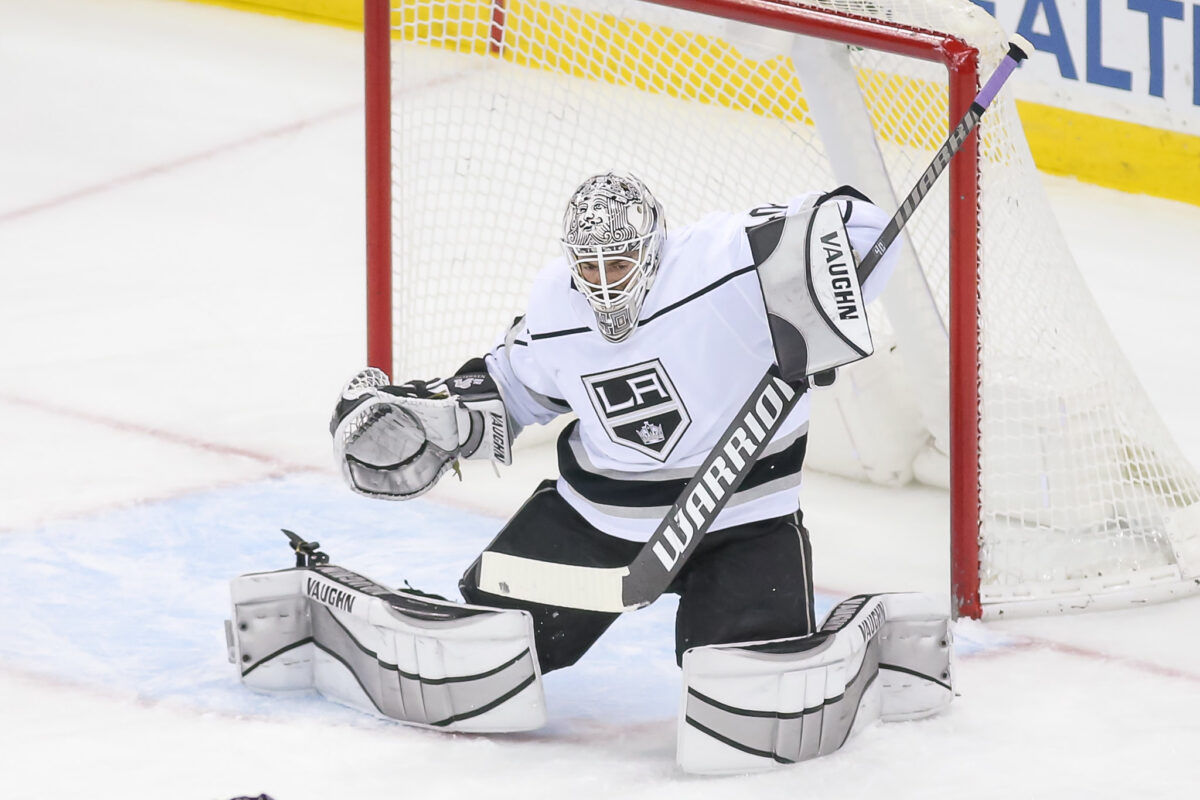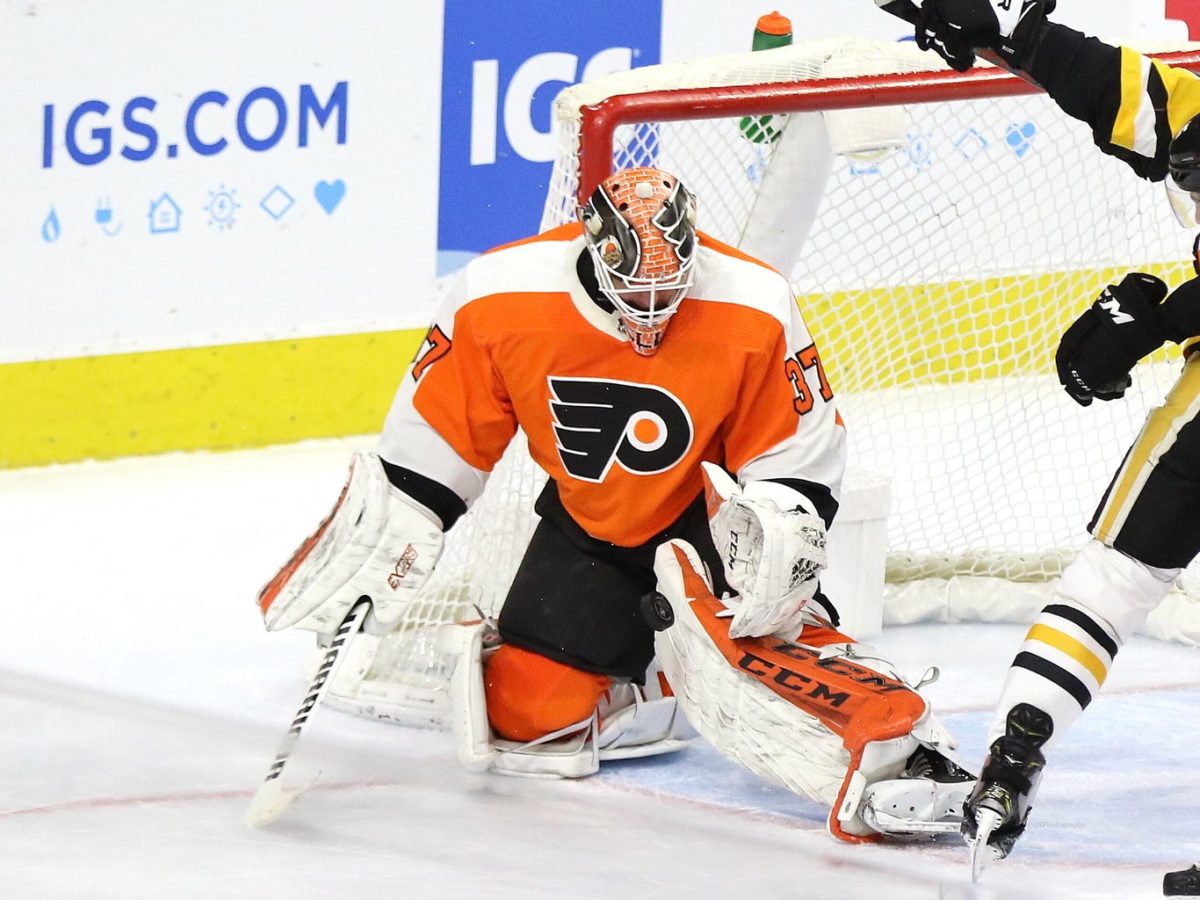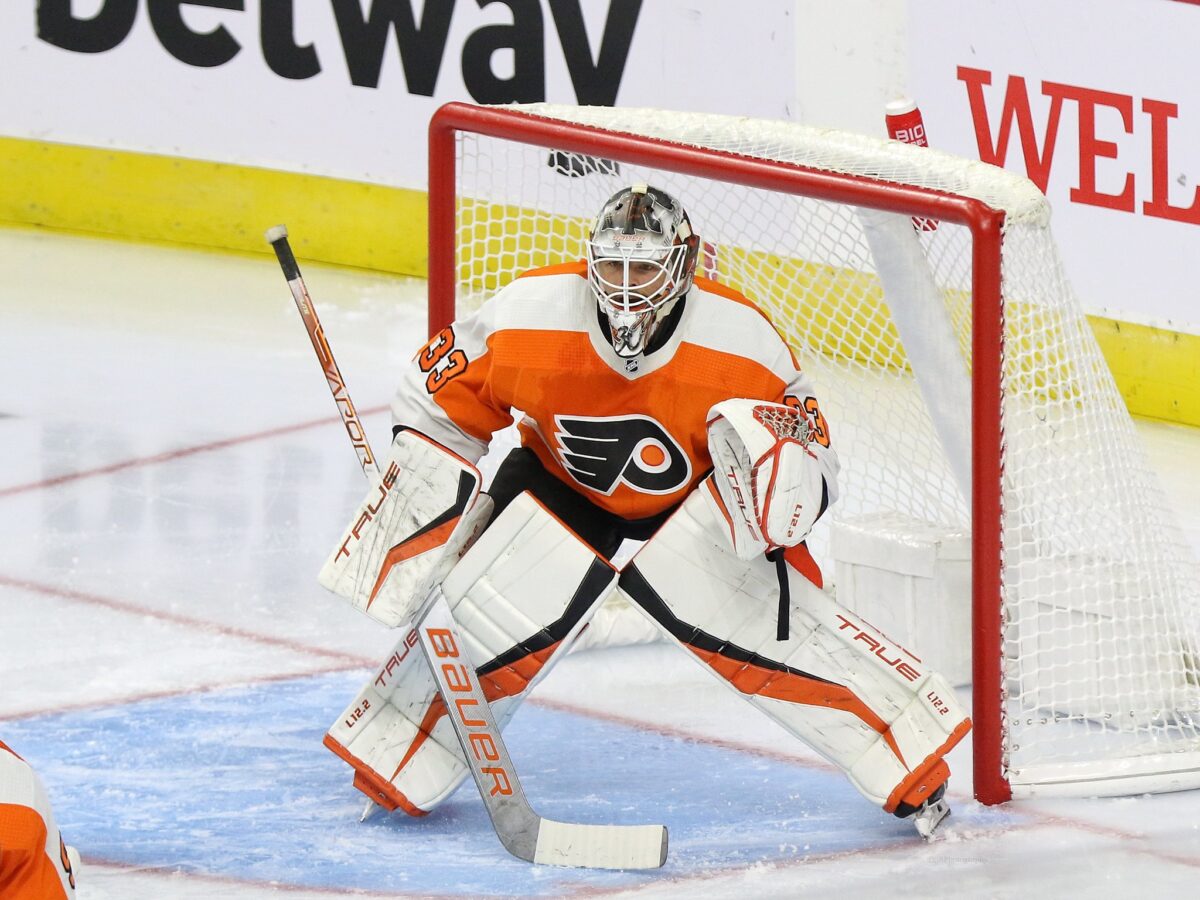When the Philadelphia Flyers acquired Cal Petersen from the Los Angeles Kings in order to get some more draft capital, the idea was more about gaining future assets rather than getting a backup goaltender for the roster. Nonetheless, he needs to be given an opportunity to play for the Flyers, because he still has the potential to be a goaltender at the NHL level for a long time.
Historical Trends Suggest Petersen Can Succeed
Many goaltenders who have been in Petersen’s situation have seen the tides of their career take a turn once they move onto a new team, regardless of how good that team was perceived to be. It could be argued that the best way to analyze a goaltender is through their goals saved above expected (GSAx), or how many more pucks they were stopping versus what an average goaltender would do. As it turns out, Petersen’s last season was one of the worst in this department across the entire league. However, some new scenery has proved to be all it takes for numerous netminders to become NHL staples since GSAx became available in the 2008-09 season.

One of the very best examples of a netminder Petersen’s age having a few bad seasons and then immediately turning it around with a new team is Mike Smith. While he was with the Tampa Bay Lightning from 2008-09 through the 2010-11 season, he posted a combined minus-25.1 GSAx. This stands as the worst career GSAx total for the team in its history. In 2010-11, he was the 11th-worst netminder in the statistic despite only appearing in 22 games. This does not suggest a netminder can flip a switch, much less in a single season as a 29-year-old. He only went on to have the second-best season in the history of GSAx in 2011-12 despite playing for a team that was projected to miss the playoffs.
Related: 10 Best NHL Goaltending Seasons Since 2008-09
In addition, a goaltender the Flyers are very familiar with in Brian Elliott accomplished the same feat, only he ranked much worse than Smith did. In 2010-11, he had the third-worst GSAx in the entire league with a total of minus-23.4. Being only a year younger than Petersen is now, it seemed as though there was little to no future for him in the league. Even though he appeared in just 38 games the next season, he finished fourth in the regular season for GSAx with a total of 18.7 along with a league-leading .940 save percentage (SV%) and 1.56 goals-against average (GAA). Once again, he did this on a team that was projected to be in the league’s basement before the season began, much like the Flyers now.

If past examples aren’t moving enough, the changes from this most recent season were arguably even more significant. In 2021-22, goaltenders under the age of 30 that had a change of scenery following a negative GSAx had a cumulative total of minus 80.6. These netminders include Kevin Lankinen, Jonas Johansson, Ilya Samsonov, Alexandar Georgiev, Filip Gustavsson, Vitek Vanecek, Adin Hill, and Connor Ingram. In 2022-23, not only did every single one have a positive GSAx in the regular season, but some of them might have changed their careers. In total, they posted an 86.3 regular season GSAx with a total differential of 166.9. This season, Petersen will be in this exact same group. Posting a minus 9.3 GSAx last season, he could be a massive bounce-back candidate in 2023-24 as a 28-year-old.
Flyers’ Younger Goalies Would Still Benefit From the AHL
Last season, the Flyers saw some solid play out of backup Sam Ersson, who posted a 1.7 GSAx in 12 games despite suffering a 7-0 loss where he was left out to dry. The 23-year-old was extremely impressive when given the chance in the NHL. He was also the team’s American Hockey League (AHL) starter for nearly the entire season. He played in 42 regular season games with the Flyers’ AHL affiliate Lehigh Valley Phantoms, posting a 24-17-1 record in the process along with a .900 SV% and a 2.84 GAA. It wouldn’t hurt to see him improve his game in the AHL again.

Petersen would benefit significantly less from AHL hockey given his age. Keeping him with the Phantoms all season would simply be poor asset management. It doesn’t make sense to not give him an opportunity at all, given the Flyers’ current circumstances.
Historically, the Flyers’ backup goaltending has not really altered their place in the standings. Even if they are in a position to make the playoffs, it likely wouldn’t matter whatsoever if Petersen sees some struggles. In the history of GSAx, the Flyers’ backups are minus 61.0 in total, or an average of minus 4.07 per season. Adjusting for wins above replacement (WAR), which takes into account how many more or less wins a team is achieving from their goaltender versus what an average one would provide, this lowers the team’s overall record by a singular point every season. Surprisingly, all but 12 teams have a negative GSAx since 2008-09 among their backups. It is normal for NHL clubs to experiment, and it is something the Flyers should do as well.
Petersen Can Be Future Trade Bait
If Petersen sees some improvement much like past and even recent trends suggest, he will be a trade candidate for the Flyers after next season. With two seasons left on his $5 million average annual value (AAV) contract, he would probably have to wait a year until he can be dealt. With the Flyers having several key restricted free agents (RFAs) to sign after the 2023-24 season, he would have to be on their list of subtractions, even if he plays well. Considering the Flyers acquired a second-round draft pick as well as Helge Grans and Sean Walker just to take on his contract, any return would be a great one. Getting rid of his salary would be a massive plus to give themselves some flexibility under the cap.
While Petersen’s case is unique and he cannot be grouped with other netminders with absolute certainty, there is a lot of data proving that he can still have a long career in the NHL. For the Flyers, they are hoping that his prime years are yet to come. As it turns out, this isn’t a lofty expectation.
